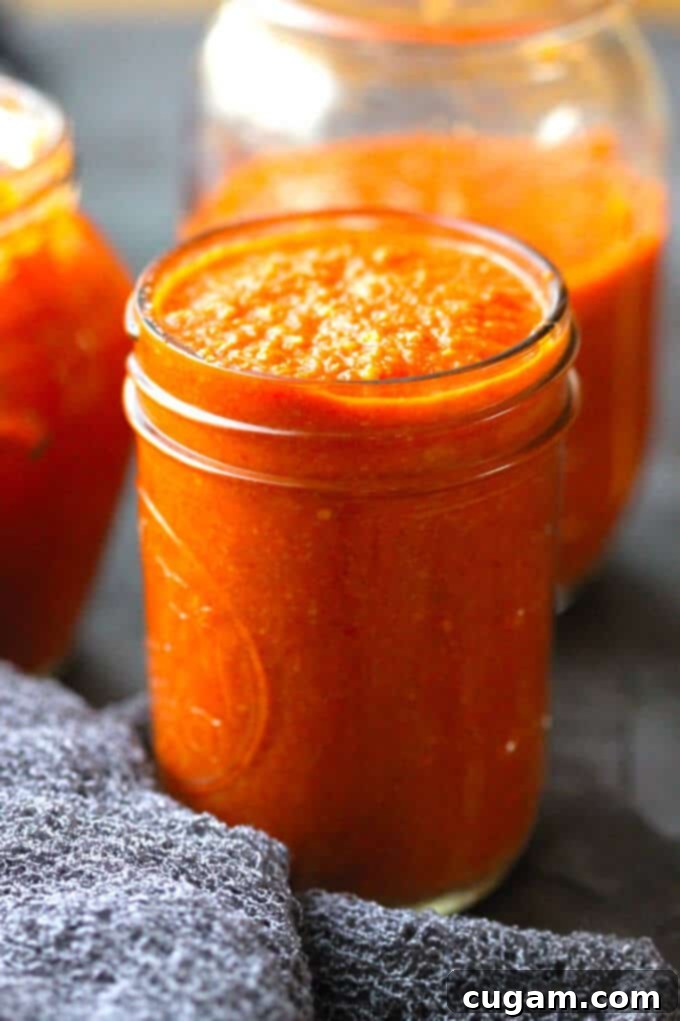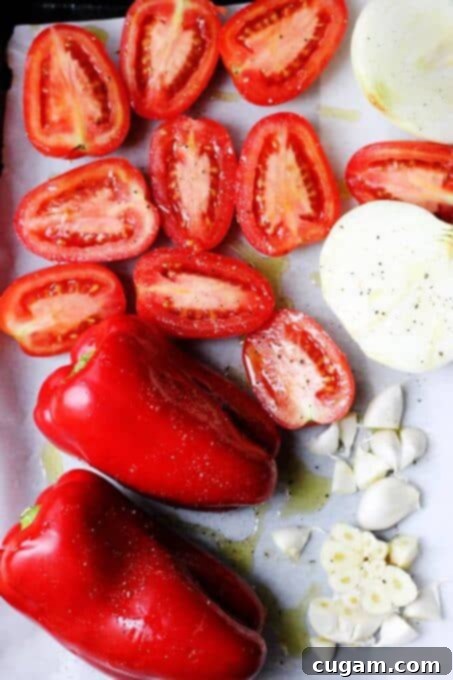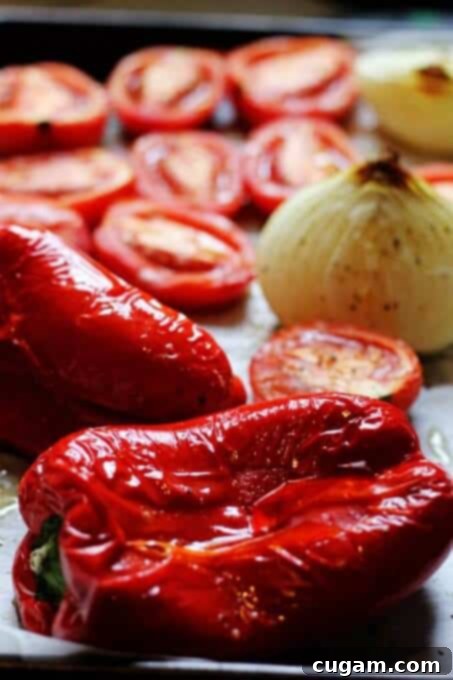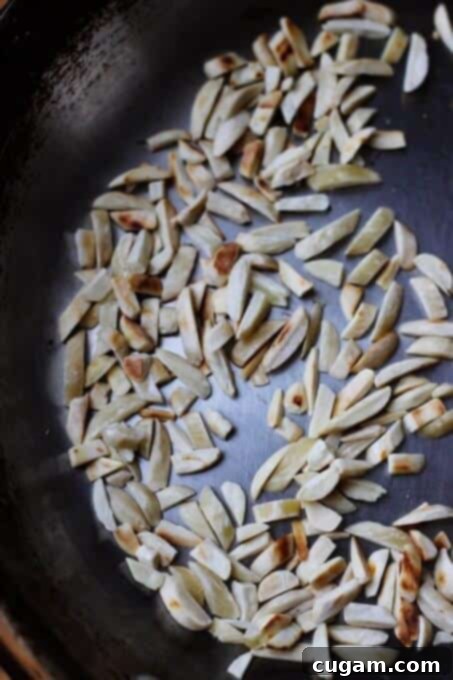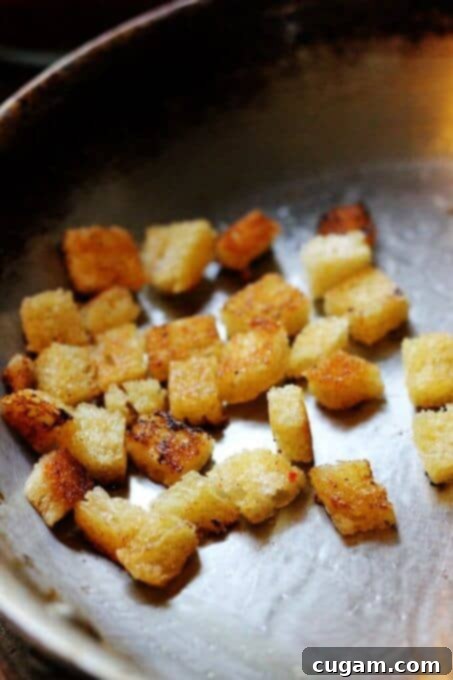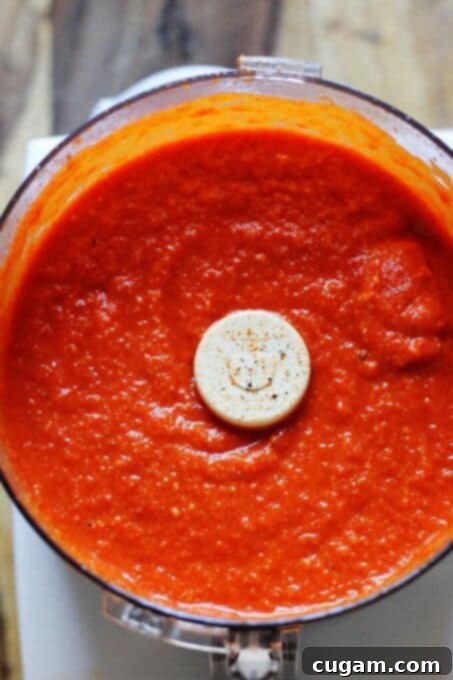Authentic Homemade Romesco Sauce: The Ultimate Spanish Roasted Red Pepper and Nut Blend
Prepare to embark on a culinary journey to the heart of Catalonia with this incredible homemade Romesco sauce recipe. Forget jarred alternatives; the secret to truly authentic Spanish Romesco lies in crafting it entirely from scratch. This vibrant, robust sauce boasts an irresistible aroma and a complex flavor profile that will elevate any dish. It’s a harmonious blend of fire-roasted peppers, ripe tomatoes, sweet onions, and aromatic garlic, perfectly balanced with the nutty crunch of toasted almonds and the smoky depth of Spanish paprika. The result is a velvety, intensely flavorful sauce so good, you’ll want it on everything.
Whether you’re hosting a spring barbecue or a summer al fresco dinner, this versatile Spanish Romesco sauce is your ideal companion. It pairs beautifully with a wide array of grilled meats, complements flaky fish, and transforms simple roasted vegetables into gourmet delights. Beyond its traditional uses, don’t hesitate to experiment: slather it onto your favorite pasta for a Mediterranean twist or use it as a robust, savory topping for homemade pizza. This truly is a sauce that belongs in every kitchen.
This comprehensive recipe guide was originally published on May 1, 2017, and has since been updated to provide even more detailed information, tips, and insights into making the perfect authentic Romesco sauce.
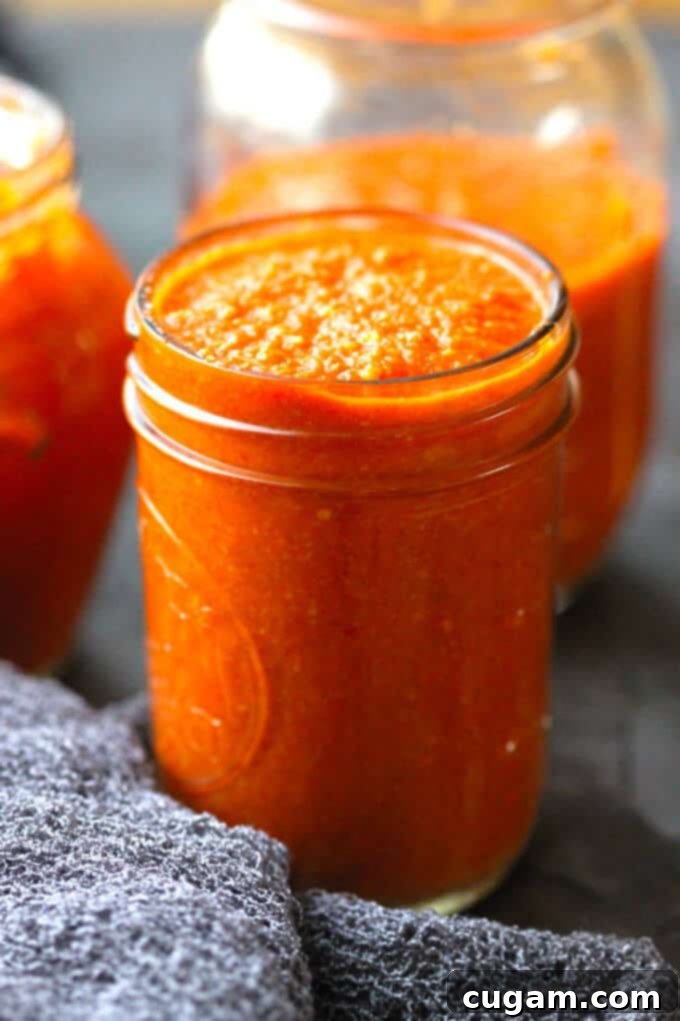
What is Romesco Sauce? Discovering this Famous Spanish Delicacy
Romesco sauce is a renowned Spanish culinary gem, a rich and rustic sauce originating from the Tarragona region of Catalonia. Traditionally, it was prepared by local fishermen to accompany their daily catch, but its incredible depth of flavor quickly earned it a place on tables across Spain and beyond. At its core, Romesco is a blended sauce primarily featuring roasted or raw tomatoes, garlic, and most importantly, an array of nuts – typically almonds and hazelnuts. A crucial element in its distinctive taste comes from Nora peppers, a specific type of dehydrated red pepper native to Spain, which imparts a subtle sweetness and earthy undertone.
Beyond these foundational elements, the sauce is elevated with stale bread (often toasted), a generous pour of fruity extra virgin olive oil, and a touch of vinegar, creating a complex and deeply satisfying flavor profile. The magic of Romesco sauce lies in the careful balance of these simple, high-quality ingredients, which, when combined, transform into a vibrant, earthy, and slightly smoky condiment. Despite its sophisticated taste, the process of making this authentic Spanish sauce is surprisingly straightforward, rewarding the home cook with a truly irresistible creation.
The Secret to an Authentic Romesco Sauce Recipe: The Nora Pepper
When delving into the world of authentic Spanish Romesco sauce, one ingredient consistently emerges as key to its traditional flavor: the Nora pepper. These unique dried peppers, known as ‘Nora’ (or ‘Ñora’ in Spanish), are a cornerstone of Spanish cuisine, particularly in the Mediterranean regions. They are sweet, round, and relatively mild, offering a distinctively rich, fruity depth and a beautiful reddish hue to the sauce. Traditionally, these peppers are rehydrated before being incorporated into the Romesco, contributing to its unparalleled authenticity and flavor.
While Nora peppers are widely cultivated and readily available in Spain, sourcing them in the United States can be a bit challenging. However, don’t let this deter you from making this exceptional sauce! If authentic Nora peppers are out of reach, a perfectly acceptable and delicious alternative exists. You can substitute fresh red bell peppers, which should be roasted until deeply caramelized and tender. To recapture some of the smoky depth and characteristic sweetness that Nora peppers would provide, be sure to use a combination of sweet smoked paprika and Spanish smoked paprika (pimentón). While pimentón itself offers a wonderful smoky kick, the addition of sweet smoked paprika helps to balance the flavor profile, ensuring your Romesco is incredibly flavorful and true to its spirit, even without the elusive Nora peppers. Consider it an adaptation that still delivers on taste, saving the hunt for Nora peppers for your next culinary adventure in Spain.
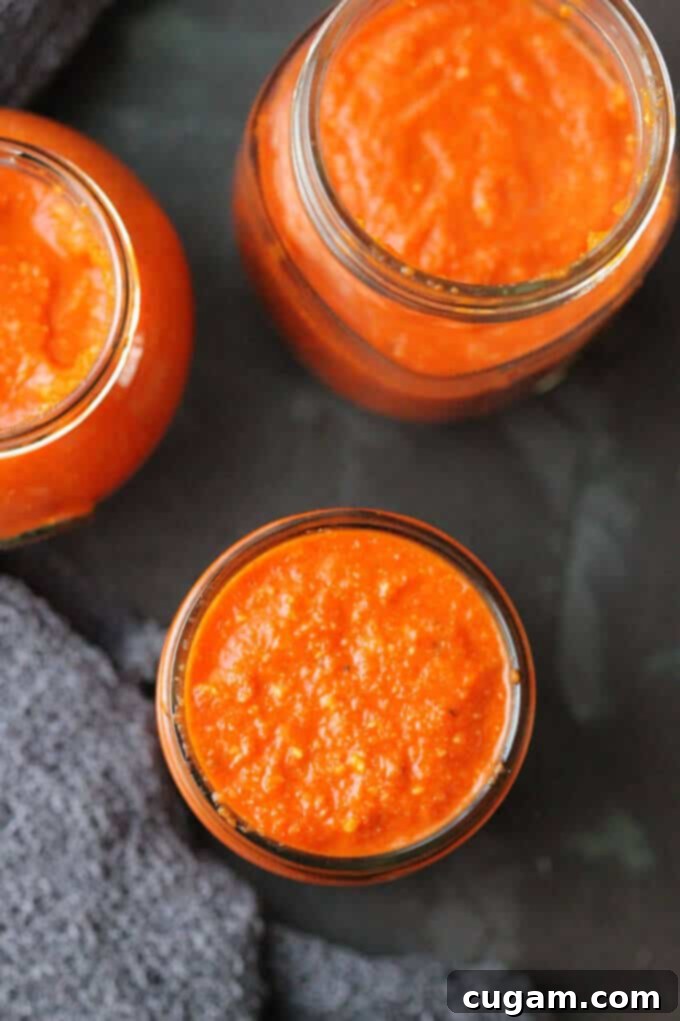
Spanish Smoked Paprika: The Indispensable Ingredient in Romesco Sauce
My admiration for Spanish cuisine is profound. Its emphasis on fresh, simple ingredients bursting with flavor truly captivates me. You might already be familiar with my Grilled Shrimp with Garlic Sauce recipe, a testament to the bold and savory flavors of Spain, or perhaps my beloved Pan con Tomate, a quintessential summer appetizer featuring toasted bread generously rubbed with garlic and topped with shredded ripe tomatoes. These dishes highlight the essence of Spanish cooking – uncomplicated yet incredibly impactful.
Among my favorite spices, Spanish smoked paprika (or pimentón) holds a truly special place. It’s an ingredient that boasts an incredible depth of flavor, capable of transforming any dish it touches. Its characteristic smokiness and rich, warm notes add an unparalleled dimension that I frequently incorporate into my home cooking. This versatile spice, typically made from peppers slowly dried and smoked over oak fires, comes in several varieties: sweet (dulce), bittersweet (agridulce), and hot (picante). For Romesco, the choice of paprika can significantly impact the final flavor, allowing you to customize the sauce to your preference. A blend of hot and sweet smoked paprika, as used in this recipe, provides a beautifully balanced profile that is both warming and subtly spicy.
You’ll find this exceptional spice featured prominently in many of my other Mediterranean-inspired dishes, where its unique character shines:
- Mediterranean Chicken Stew with Sweet Potatoes, Beans and Olives.
- Spanish Tuna Stew with Potatoes, Peppers, and Tomatoes
- Spanish Garlic Shrimp – Gambas Al Ajillo
- Roasted Cauliflower Soup with Spanish Smoked Paprika
Indeed, in my kitchen, Spanish smoked paprika has a knack for expanding beyond the strict confines of Spanish cuisine, finding its way into unexpected yet delightful pairings. It lends an intriguing smoky nuance to dishes like my Ham and Cheese Stuffed Eggs or adds an unforgettable layer of flavor to my Unique Egg Salad with Corn, Cheese and Smoked Paprika. It’s a testament to its incredible versatility and flavor-enhancing properties.
Truly, an authentic and flavorful Romesco sauce would simply not be complete without the distinctive notes of Spanish smoked paprika. Its earthy, smoky essence is fundamental to the sauce’s character. If you’re looking for more ways to enjoy this incredible condiment, be sure to check out my Linguine Pasta with Romesco and Broccoli, where this very sauce takes center stage, demonstrating its fantastic ability to cling to pasta and complement fresh vegetables.
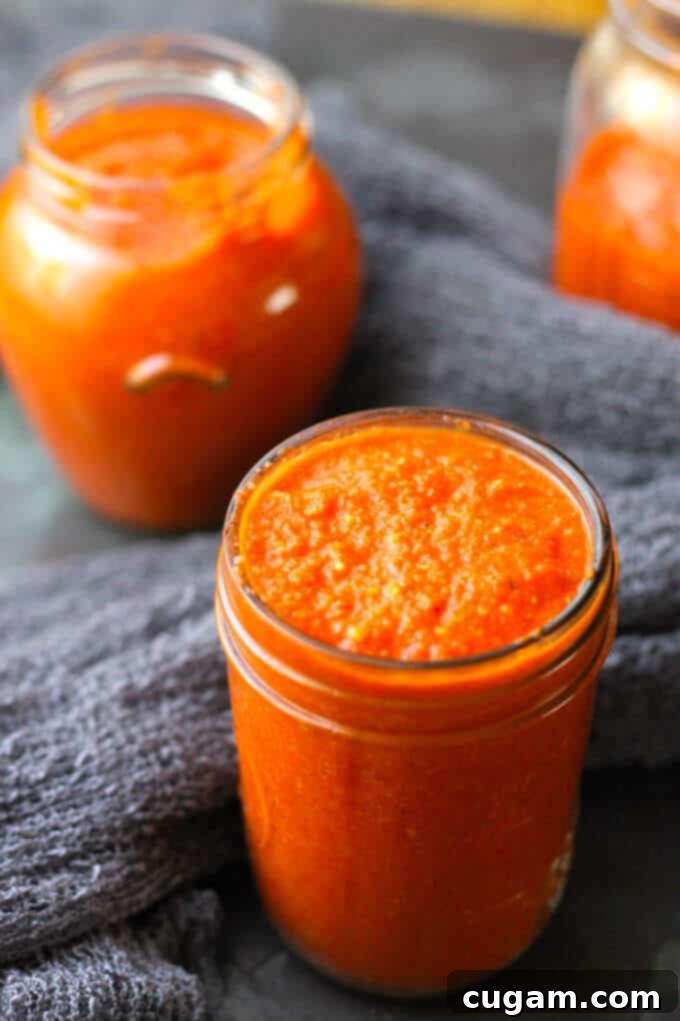
Romesco Sauce Uses: A Versatile Condiment for Every Meal
The beauty of Romesco sauce lies not just in its incredible flavor, but also in its remarkable versatility. This vibrant Spanish sauce can be effortlessly integrated into countless dishes, transforming everyday meals into extraordinary culinary experiences. Its rich, smoky, and slightly tangy profile makes it an excellent choice for a wide variety of applications. Here are some of the most popular and creative ways to enjoy this delicious condiment:
- Enhance Grilled Meats or Vegetables: Romesco is a match made in heaven for anything fresh off the grill. Drizzle it generously over perfectly charred steaks, chicken, pork, or lamb, allowing its robust flavors to meld with the smoky notes of the grill. It’s equally fantastic with grilled asparagus, zucchini, bell peppers, or even heartier vegetables like portobello mushrooms.
- Elevate Burgers and Veggie Burgers: Move beyond ketchup and mustard! A dollop of Romesco sauce adds a gourmet touch to your favorite beef or veggie burgers, offering a burst of complex flavor that’s both savory and satisfying.
- Perfect with Seared or Grilled Fish: The bright, fresh notes of Romesco cut beautifully through the richness of fish. Serve it alongside seared scallops, grilled salmon, cod, or any white fish for a light yet incredibly flavorful meal.
- A Robust Pasta Sauce: Transform a simple pasta dish into a Mediterranean masterpiece. Toss freshly cooked linguine, spaghetti, or penne with Romesco sauce for a quick, flavorful meal that rivals any restaurant dish.
- An Unforgettable Pizza Sauce: Reinvent your homemade pizza by using Romesco as the base. Its deep, savory flavor provides a wonderful alternative to traditional tomato sauce, pairing exceptionally well with goat cheese, olives, and fresh herbs.
- A Delightful Breakfast Side: Add a touch of Spanish flair to your morning eggs. Serve Romesco alongside scrambled eggs, a frittata, or even as a flavorful base for huevos rancheros.
- The Ultimate Romesco Dip: Sometimes, simplicity is best. Serve Romesco as a rustic appetizer dip with crusty bread, toasted pita, or an assortment of fresh vegetables. It’s an effortlessly elegant way to start any meal or enjoy a light snack.
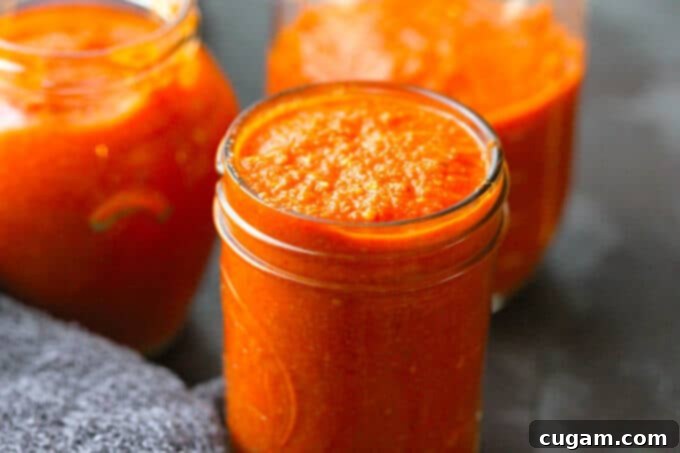
What Ingredients Are Needed to Make this Romesco Sauce Recipe?
One of the most appealing aspects of this Romesco sauce recipe is its reliance on fresh, wholesome ingredients that are readily available at most grocery stores. There are no exotic or hard-to-find items here, just real food that comes together to create an extraordinary flavor. Here’s a breakdown of the key components that contribute to its rich and authentic taste:
- Bell Red Peppers: These are the workhorse of our Romesco, providing the foundational sweetness and vibrant color, especially as a substitute for Nora peppers. Roasting them brings out their natural sugars and a beautiful char.
- Roma Tomatoes: Chosen for their firm flesh and lower water content, Roma tomatoes roast beautifully, concentrating their rich, sweet, and slightly acidic flavors, which are essential to the sauce’s depth.
- Sweet Spanish Onions: Roasting sweet onions mellows their pungency and brings out a delicious caramelization, adding a layer of subtle sweetness to the blend.
- Garlic: Whole cloves of garlic, roasted until tender and fragrant, provide a deep, aromatic, and slightly sweet undertone, without the harshness of raw garlic.
- Blanched Almonds: These nuts are crucial for Romesco’s characteristic texture and nutty flavor. Blanched almonds are preferred as their skins have been removed, resulting in a smoother sauce. Toasting them before blending amplifies their flavor significantly.
- Bread: A slice of stale white bread, with the crust removed and cubed, acts as a thickening agent and helps to create the sauce’s classic hearty consistency. Toasting the bread lightly before blending adds another layer of flavor.
- White Wine Vinegar: While traditional Spanish Romesco often uses Sherry Vinegar for its distinct nutty and acidic notes, white wine vinegar is an excellent and more accessible substitute in the U.S. It provides the necessary tang and brightness to balance the richness of the roasted vegetables and nuts.
- Extra Virgin Olive Oil: A high-quality extra virgin olive oil is indispensable. It binds the sauce, adds a silky texture, and imparts its own fruity, peppery notes, contributing significantly to the overall Mediterranean flavor profile.
- Spanish Smoked Paprika (hot): This spice delivers the authentic smoky warmth and a gentle heat that defines Romesco. It’s a non-negotiable ingredient for true Spanish flavor.
- Sweet Smoked Paprika: Complementing the hot paprika, the sweet variety enhances the overall smoky aroma and adds a touch of mild sweetness, rounding out the spice profile beautifully.
- Salt & Pepper: Essential for seasoning, these simple additions bring all the flavors together, highlighting the natural sweetness and savory notes of the ingredients.
Below, you’ll find the complete, printable recipe card with detailed step-by-step instructions, complete with photos, guiding you through the process of how to make Romesco Sauce from start to finish. Get ready to create a truly unforgettable Spanish classic in your own kitchen!
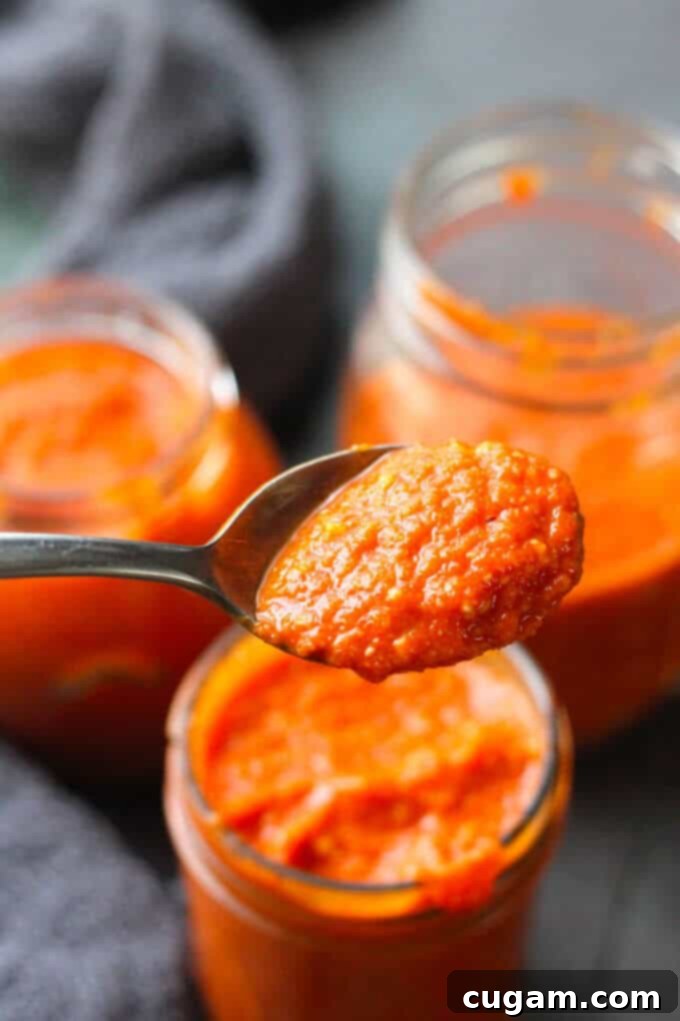
Here is your printable recipe
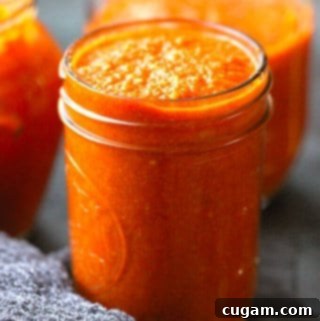
Authentic Romesco Sauce Recipe
Print
Pin
Rate
Ingredients
- 2 Red Bell Peppers – fresh
- 5 Roma Tomatoes – medium, halved
- 1 Spanish Onion – cut in half
- 1 Garlic Bulb – whole, cut in half horizontally
- 1/4 cup Blanched Almonds
- 1 slice White Bread – crust removed, cubed
- 1 teaspoon Smoked Sweet Paprika
- 1/4 teaspoon Spanish Hot Smoked Paprika
- 1 tbsp White Wine Vinegar – or Sherry Vinegar
- 2 tbsp Extra Virgin Olive Oil
- 1 teaspoon Salt – or to taste
- Black Pepper – to taste
Instructions
-
Preheat your oven to 350 degrees F (175 C). Arrange the bell peppers, halved Roma tomatoes, halved Spanish onion, and the halved garlic bulb on a baking sheet. Drizzle generously with olive oil, then season with salt and pepper.

-
Roast the vegetables for approximately 35-40 minutes, or until they are soft, tender, and slightly caramelized. During roasting, remember to rotate the bell peppers a few times to ensure even cooking and charring. Once done, remove the roasted vegetables from the oven, place them in a bowl, and cover tightly with plastic wrap to allow them to steam and cool. This step makes peeling the peppers much easier.

-
While the vegetables are roasting and cooling, prepare the almonds. Place the blanched almonds in a dry frying pan over medium heat. Toss them frequently until they are lightly browned and fragrant. Be careful not to burn them, as they can go from toasted to burnt very quickly. Remove from heat and set aside.

-
In the same warmed pan, place the cubed white bread (crusts removed). Toast the bread cubes over medium heat, tossing them regularly until they are golden brown and slightly crispy on all sides. This adds a lovely texture and flavor to the sauce. Set aside.

-
Once the roasted vegetables have cooled enough to handle, remove the skins from the peppers and garlic. Place the roasted peppers, tomatoes, onion, and garlic into a food processor. Add the toasted almonds, toasted bread cubes, both types of smoked paprika, and white wine vinegar.

-
Process all the ingredients until you achieve a smooth, rich consistency. If the sauce is too thick, you can add a tablespoon or two of water or olive oil to reach your desired texture. Taste the sauce and adjust the seasoning with additional salt and pepper if needed. Your homemade Romesco sauce is now ready to enjoy! You can store the sauce in an airtight container in the refrigerator for up to 3-4 days, or freeze it for a few months for longer storage.

Notes
Should you not have blanched almonds on hand, you can use raw almonds. Simply soak them in warm water for about an hour before roasting; this helps soften them and makes blending easier for a smoother sauce.
Nutrition
Learn more about the author, Edyta, here or follow Eating European on social media for more delicious recipes and culinary inspiration: Facebook, Instagram, Pinterest, and Twitter.
